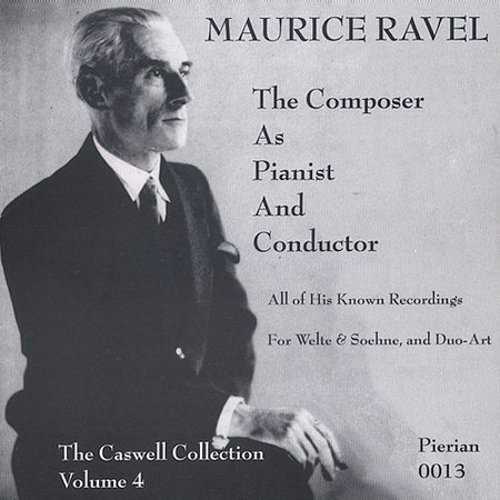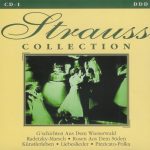
Orchestra: Lamoureux Orchestra
Audio CD
Number of Discs: 1
Format: APE (image+cue)
Label: Pierian
Size: 168 MB
Recovery: +3%
Scan: no
As a pianist with records for Welte-Mignon
Valses nobles et sentimentales (written in 1913, Paris)
01. I
02. II
03. III
04. IV
05. V
06. VI
07. VII
Sonatine (written in 1913, Paris)
08. Modere
09. Mouvement de menuet
(Ravel wrote only the first two parts)
As a pianist with records for Duo-Art
Miroirs
10. Oiseaux tristes (written in 1922, London)
11. La Vallee des cloches (written in 1928, New York)
12. Pavane pour une Infante defunte (written in 1922, London)
As conductor of the records for Polydor
13. Bolero (written in 1930, Paris)
The one to have…..
This Pierian CD was obviously created with love and affection, with a detailed booklet that convincingly explains that the recordings here are the only ones actually by Ravel, whatever other labels may claim. Ravel did supervise and give approbation to several other recordings of his music by other musicians. The Pierian Recording Society is a non-profit organization “devoted to the preservation of historic performances and obscure repertoire”. They did a first-rate job.
The only studio recording on the CD is Bolero, recorded in 1930 for Polydor. Even though Ravel commented that “…..I had written a piece lasting seventeen minutes…..”, his recording takes 16:04. Albert Wolff rehearsed the Lamoureux Orchestra with Ravel running back and forth from and to the control room, and then stepped up to the podium for the actual recording we hear. The restoration is quite remarkable for it’s clarity. All the other works on the CD were done on piano rolls for Welte-Mignon and Duo-Art, and so sound like modern recordings. For Welte-Mignon in 1913, there are Valses nobles et sentimales (13:21, per my CD timer) and 2 movements from Sonatine (Modere – 3:37 & Mouvement de menuet – 2:36). He didn’t do the third movement of Sonatine, the writer of the booklet, Arbie Orenstein, opining that Ravel likely didn’t feel his playing prowess was up to the task. Then for Duo-Art in 1922 he did Oiseaux tristes (4:06) and Pavane pour une Infante defunte (5:37). From 1928 comes La Vallee des cloches (5:53). It’s amazing how those piano rolls were able to capture so many nuances.




amazing!! Thank you so much !
Thanks!